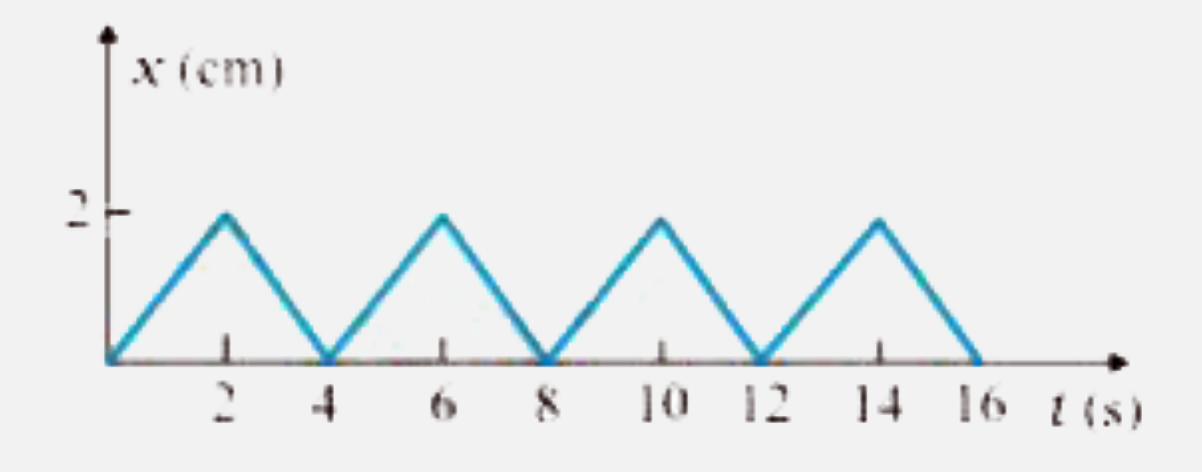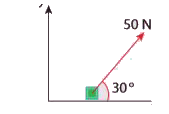A circular racetrack of radius 300 m is banked at an angle of 15∘ If the coefficient of friction between the wheels of a race car and the road is 0.2 what is the (a) optimum speed of the race car to avoid wear and tear on its tyres , and (b) maximum permissible speed to aviod slipping ? Solution in Tamil
On a banked road, the horizontal component of the normal force and the frictional force contribute to provide centripetal force to keep the car moving on a circular turn without slipping. At the optimum speed, the normal reaction’s component is enough to provide the needed centripetal force, and the frictional force is not needed. The optimum speed v0 is given by Eq.
v0=(Rgtanθ)1/2
Here R=300m,θ=15∘,g=9.8ms−2 , we have
v0=28.1ms−1
The maximum permissible speed vmax is given by eq.
vmax=(Rg(μs+tanθ)1−μstanθ)1/2=38.1ms−1
Topper's Solved these Questions
- LAW OF MOTIONBOOK - NCERT TAMILCHAPTER - LAW OF MOTIONEXERCISE - EXERCISE
23 Videos
- LAW OF MOTIONBOOK - NCERT TAMILCHAPTER - LAW OF MOTIONEXERCISE - EXERCISE (ADDITIONAL EXERCISE)
17 Videos
- KINETIC THEORY OF GASESBOOK - NCERT TAMILCHAPTER - KINETIC THEORY OF GASESEXERCISE - EVALUATION (Numerical Problems)
8 Videos
- LAWS OF MOTIONBOOK - NCERT TAMILCHAPTER - LAWS OF MOTIONEXERCISE - EXERCISE (V. Numerical Problems)
14 Videos
Similar Questions
Give the magnitude and direction of the net force acting on
(a) a drop of rain falling down with a constant speed
(b) a crok of mass 10 g floating on water
(c) a kite skilfully held stationary in the sky
(d) a car moving with a constant velocity of 30kh/h on a rough road
(e) a high speed electron in space free from all gravitational objects and free of electric and magnetic fields.
View SolutionFigure shows the position-time graph of a body of mass 0.04 kg. Suggest a suitable physical context for this motion. What is the time between two consecutive impulses received by the body ? What is the magnitude of each impulse ?

View SolutionA fresh air is composed of nitrogen N2(78%) and oxygen O2(21%). Find the rms speed of N2 and O2 at 20∘C.
View SolutionA force of 50N act on the object of mass 20 kg. shown in the figure. Calculate the acceleration of the object in x and y directions

View SolutionA circular racetrack of radius 300 m is banked at an angle of 15^(@) If the coefficient of friction between the wheels of a race car and the road is 0.2 what is the (a) optimum speed of the race car to avoid wear and tear on its tyres , and (b) maximum permissible speed to aviod slipping ?
View SolutionA circular race track of radius 400 m is banked at an angle of 10∘ . If the coefficient of friction between the wheels of a race car and the road is 0.2 , what is the (i) optimum speed of the race car to aviod wear and tear on its tyres .
maximum permissible speed to aviod slipping ?
View SolutionA circular racetrack of radius 100 m is banked at an angle of 45^(@) . What is the (i) Optimum speed of race car to avoid wear and tear of its tyres? (ii) Maximum permissible speed to avoid slipping if the coefficient of friction is 0.2?
View SolutionA circular race track of radiu 400 m is banked at an angle of 10^(@) . If the coefficient of friction between the wheels of a race car and the road is 0.2, what is the (i) optimum speed of the race car to avoid wear and tear on its tyres? maximum permissible speed to avoid slipping?
View SolutionA circular racetrack of radius 300 m is banked at an angle of 15^@ . If the coefficient of friction between the wheels of a race-car and the road is 0.2, what is the (a) optimum speed of the race- car to avoid wear and tear on its tyres, and (b) maximum permissible speed to avoid slipping ?
View SolutionA circular racetrack of radius 300 m is banked at an angle of 15∘ . If the coefficient of friction between the wheels of a race-car and the road is 0.2, what is the (a) optimum speed of the race- car to avoid wear and tear on its tyres, and (b) maximum permissible speed to avoid slipping ?
View SolutionA circular racetrack of radius 300 m is banked at an angle of 15^@ . If the coefficient of friction between the wheels of a race-car and the road is 0.2, what is the (a) optimum speed of the race- car to avoid wear and tear on its tyres, and (b) maximum permissible speed to avoid slipping ?
View SolutionA circular racetrack of radius 300 m is banked at an angle of 15∘ . If the coefficient of friction between the wheels of a race-car and the road is 0.2, what is the (a) optimum speed of the race- car to avoid wear and tear on its tyres, and (b) maximum permissible speed to avoid slipping ?
View SolutionA circular racetrack of radius 300 m is banked at an angle of 15∘ If the coefficient of friction between the wheels of a race car and the road is 0.2 what is the (a) optimum speed of the race car to avoid wear and tear on its tyres , and (b) maximum permissible speed to aviod slipping ?
View SolutionA circular racetrack of radius 300m is banked at an angle of 15°. If the coefficient of friction between the wheels of a race - car and the road is 0.2, what is the (a) optimum speed of the race - car to avoid wear and tear on its tures, and (b) maximum. Permissible speed to avoid slipping?
View SolutionA circular racetrack of radius 300m is banked at an angle of 15^(@) . If the coefficient of friction between the wheels of a race - car and the road is 0.2, what is the (a) optimum speed of the race - car to avoid wear and tear on its tures, and (b) maximum. Permissible speed to avoid slipping ?
View SolutionA circular racetrack of radius 300 m is banked at an angle of 15^(@) If the coefficient of friction between the wheels of a race car and the road is 0.2 what is the (a) optimum speed of the race car to avoid wear and tear on its tyres , and (b) maximum permissible speed to aviod slipping ?
View Solution
